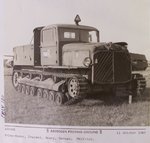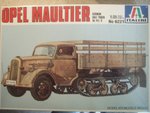So which is it in your opinion ?
I'll list the info for some of the more famous ones, but there are plenty others:
Sd.Kfz.9
Weight (with fuel and equipment): 12,130 kg
Engine power: 250 hp
Range: 250 km
hp/t: 20.61
Armor: None.
Sd.Kfz.10
Weight (with fuel and equipment): 4,900 kg
Engine power: 100 hp
Range: 285 km
hp/t: 20.4
Armor: None.
Sd.Kfz.250
Weight (with fuel and equipment): 5,387 kg
Engine power: 100 hp
Range: 320 km
hp/t: 18.56
Armor: 6 to 15 mm
Sd.Kfz.251
Weight (with fuel and equipment): 7,810 kg
Engine power: 100 hp
Range: 300 km
hp/t: 12.8
Armor: 6 to 15 mm
M3A1
Weight (with fuel and equipment): 9,300 kg
Engine power: 143 hp
Range: 282 km
hp/t: 15.37
Armor: 6 to 12.7 mm
I'll list the info for some of the more famous ones, but there are plenty others:
Sd.Kfz.9
Weight (with fuel and equipment): 12,130 kg
Engine power: 250 hp
Range: 250 km
hp/t: 20.61
Armor: None.
Sd.Kfz.10
Weight (with fuel and equipment): 4,900 kg
Engine power: 100 hp
Range: 285 km
hp/t: 20.4
Armor: None.
Sd.Kfz.250
Weight (with fuel and equipment): 5,387 kg
Engine power: 100 hp
Range: 320 km
hp/t: 18.56
Armor: 6 to 15 mm
Sd.Kfz.251
Weight (with fuel and equipment): 7,810 kg
Engine power: 100 hp
Range: 300 km
hp/t: 12.8
Armor: 6 to 15 mm
M3A1
Weight (with fuel and equipment): 9,300 kg
Engine power: 143 hp
Range: 282 km
hp/t: 15.37
Armor: 6 to 12.7 mm





